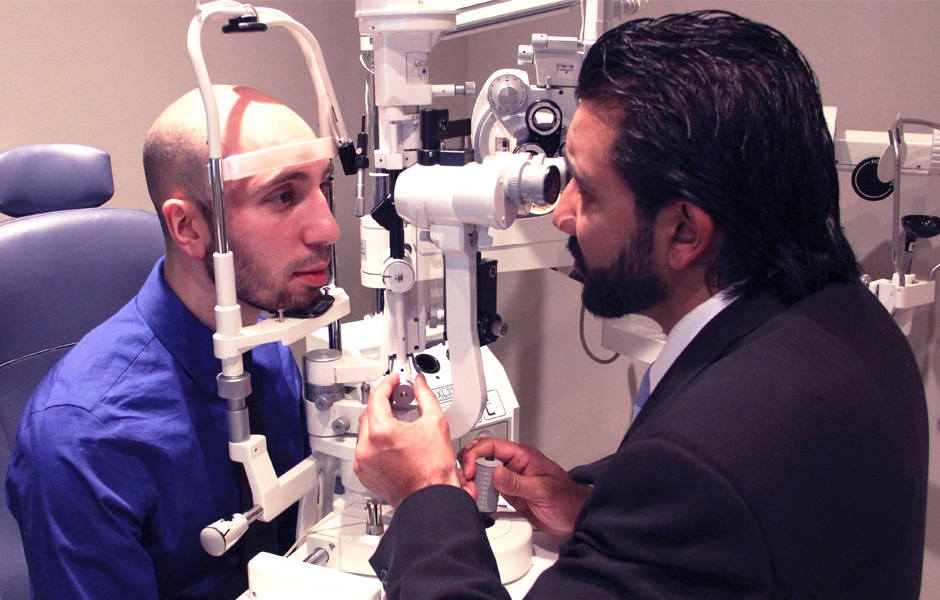Leading Eye Doctors in Andalusia: Schedule Your Consultation Today
Leading Eye Doctors in Andalusia: Schedule Your Consultation Today
Blog Article
Recognizing the Different Vision Correction Procedures Available for Clearer View
In the world of vision correction treatments, a plethora of choices exist to address refractive mistakes and provide people with clearer view. From the commonly recognized LASIK surgical procedure to less intrusive procedures like PRK and implantable lenses, the area of ophthalmology supplies a variety of techniques tailored to match different needs and preferences. Each treatment includes its own collection of factors to consider, benefits, and possible risks. Comprehending the nuances of these vision improvement methods is important for making informed decisions about one's aesthetic health. Allow's check out the details of these treatments and clarified the course to achieving boosted vision clearness.
LASIK Surgical Procedure
LASIK surgery is a typical refractive treatment used to fix vision issues such as farsightedness, astigmatism, and nearsightedness. This medical strategy, which stands for Laser-Assisted sitting Keratomileusis, aims to reshape the cornea to improve how light is focused on the retina, eventually improving vision clearness. During the procedure, a slim flap is developed on the cornea, and a laser is utilized to eliminate precise amounts of tissue to reshape it appropriately. This reshaping enables light to be accurately focused onto the retina, fixing refractive mistakes.
One of the primary benefits of LASIK surgery is the fast improvement in vision experienced by people. Generally, LASIK surgery is a prominent choice for individuals looking for a long-term remedy for their vision problems.
PRK Treatment

PRK is an appropriate alternative for individuals with slim corneas or those at a greater threat of eye injuries, as it does not involve creating a corneal flap. The healing process for PRK is somewhat longer compared to LASIK, as the epithelium needs time to regrow. Individuals might experience pain and blurred vision for a couple of days adhering to the treatment.
Despite the longer recovery time, PRK can produce outstanding outcomes in vision renovation, making it a valuable alternative for those that might not appropriate prospects for LASIK surgical procedure. - Cardiologist Andalusia
Implantable Lenses
As opposed to PRK where the cornea is reshaped straight, implantable lenses provide one more technique for fixing vision by placing synthetic lenses inside the eye. This procedure is specifically advantageous for individuals with high degrees of farsightedness, nearsightedness, or astigmatism who might not be ideal candidates for laser surgical treatments like LASIK or PRK.
Implantable lenses, likewise known as phakic intraocular lenses, job by supplementing the eye's all-natural lens with a synthetic one. These lenses can be put in front of the all-natural lens (former chamber) or behind the iris and in front of the natural lens (posterior chamber) By changing the power and positioning of these lenses, eye doctors can efficiently correct refractive mistakes and improve aesthetic acuity.
One advantage of implantable lenses is that they are exchangeable and removable, giving versatility for future adjustments. However, just like any procedure, straight from the source there are threats involved, such as infection or cataract development. Patients taking into consideration implantable lenses must speak with an eye treatment specialist to determine the most ideal choice based upon their individual requirements and eye health.
Corneal Rings

The treatment for placing corneal rings is minimally invasive and reasonably fast, often carried out as an outpatient treatment. During the surgical treatment, the ophthalmologist makes a little cut in the cornea and inserts the rings at a details depth. As soon as in position, the rings help to improve the cornea, providing a smoother surface for light to go into the eye, which can result in more clear vision.
Corneal rings are considered a reversible procedure, as they can be gotten rid of or replaced if required. While they might not totally remove the requirement for glasses or contact lenses, corneal rings can significantly boost vision quality and overall visual convenience for people with keratoconus or other corneal irregularities.
Refractive Lens Exchange
Complying with the adjustment of corneal abnormalities with procedures like corneal rings, another vision adjustment strategy that can address refractive errors is Refractive Lens Exchange (RLE) RLE is a procedure that entails changing the eye's all-natural lens with a synthetic intraocular lens (IOL) to correct refractive errors such as presbyopia, farsightedness, and nearsightedness. This treatment is particularly helpful for individuals who may not appropriate candidates Look At This for treatments like LASIK or PRK due to variables such as slim corneas or high refractive mistakes.
Recuperation time for RLE is relatively quick, and individuals can anticipate enhanced vision quickly after the procedure. As with any surgical procedure, prospective threats and difficulties exist, so an extensive appointment with an eye treatment professional is important to figure out if RLE is the right vision correction option.
Final Thought

In the realm of vision improvement procedures, a multitude of options exist to attend to refractive errors and give individuals with clearer view.LASIK surgery is a common refractive treatment used to deal with vision issues such as farsightedness, astigmatism, and nearsightedness.While also an usual refractive procedure, the PRK (Photorefractive Keratectomy) method varies from LASIK surgical treatment in its strategy to fixing vision issues.Following the modification of corneal irregularities with procedures like corneal rings, an additional vision correction strategy that can deal with refractive mistakes is Refractive Lens Exchange (RLE) LASIK surgery, PRK procedure, implantable lenses, corneal rings, and refractive lens exchange are all alternatives that can address different vision issues.
Report this page